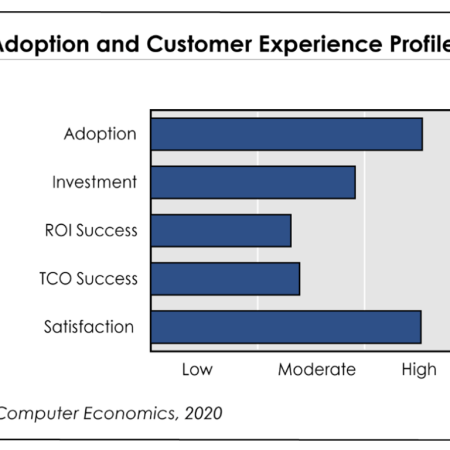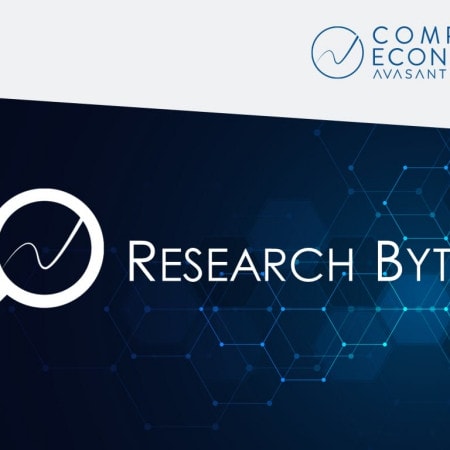-

Outsourcing of Application Management Increasing Despite Growth of SaaS
As the application portfolio grows, the ongoing support for those systems can become a burden on the IT organization, leaving little time for developing and implementing new systems. In response, a growing number of organizations see outsourcing application management as an attractive option. This Research Byte explores the trend, based on our full report, Application Management Outsourcing Trends and Customer Experience.
-

Application Management Outsourcing Trends and Customer Experience 2022
As the application portfolio grows, the ongoing support for those systems can become a burden on the IT organization, leaving little time for developing and implementing new systems. In response, a growing number of organizations see outsourcing application management as an attractive option. Still, we are a long way from eliminating application management entirely from the IT organization.
August, 2022
-

SaaS Adoption Trends and Customer Experience 2020
Software as a service is everywhere, and nearly all new software deployments are SaaS. It is time to stop thinking of SaaS as a growing technology and think of it as a mature incumbent. This report quantifies the current investment trends for SaaS and identifies the benefits driving companies to expand their SaaS implementations.
September, 2020
-

Understanding Cloud ERP Buyers and Providers
Not all ERP systems that are labeled “cloud” are the same. At the same time, vendors need to realize that not all ERP buyers are the same. The study provides an overview of ERP cloud vendors and describes the two major categories of buyers in this market: first-time buyers looking for their first ERP systems and established companies replacing their legacy systems. We also segment cloud ERP providers into two categories: cloud-only ERP providers and traditional vendors that have added cloud or hosting as deployment options. We conclude with recommendations for buyers and providers who seek to serve these markets. Two appendices provide our analysis of key ERP vendors in each category. (32 pp., 6 fig.) [Research Byte]
August, 2014
-

Cloud Users Spend Less, Spend Smarter on IT
Does SaaS save money? Based on our survey of IT organizations that have migrated fully or largely to the cloud, we find that the answer is yes. Furthermore, their IT spending is spent in activities that deliver more value to the business. This Research Byte compares the IT spending of our cloud survey respondents with our industry IT spending benchmarks.
February, 2014
-

Four Cloud ERP Providers on the Salesforce Platform
Customers of Salesforce.com that are looking for new ERP capabilities now have four cloud ERP systems to choose from on the Salesforce platform, Salesforce1. These are FinancialForce, Kenandy, Rootstock, and AscentERP. This report gives a brief description of the Salesforce1 development platform and why it is attractive to developers. We then describe each of these four ERP providers, along with their strengths and target customers. We conclude with recommendations for qualifying cloud ERP providers. (8 pages, 1 fig.) [Research Byte]
February, 2014
-

With SaaS, Software Not Only Service Needed
Software-as-a-service simplifies much of the complexity involved in implementing and using enterprise software. However, some SaaS providers may be neglecting key elements of success for buyers. This Research Byte shares lessons learned from recent from recent SaaS deal negotiations.
September, 2013
-

Software-as-a-Service Adoption and Economic Experience
This study examines adoption and investment trends for SaaS, providing data about how many organizations have the technology in place, how many are implementing it, and how many are expanding implementations. To give additional insight, we look at the economic experience of those that have adopted the technology: We examine return on investment experience and balance the potential ROI against the risks, measured in terms of the percentage of organizations that exceed budgets for total cost of ownership (TCO). In addition, we report on the service-success and cost-success rates for outsourcing of the application hosting function, and on adoption by sector and organization size. We conclude with recommendations on SaaS adoption. (15 pp., 9 figs.) [Research Byte]
March, 2011
-

SaaS Returns Bolster Cloud Computing’s Promise
IT organizations are turning more and more to âthe cloudâ for computing resources, whether they be applications, data center infrastructure, development platforms, or services. In this study, we present adoption trends, return on investment, and total cost of ownership experiences for software as a service (SaaS), which represents one significant component of the cloud computing paradigm. We also define cloud computing by looking at some of the major vendor offerings and conclude with key points IT managers should consider when evaluating cloud computing options. (14 pp., 8 figs.)[Executive Summary]
March, 2009
-

Software as a Service Shows Attractive Payback
Software as a service (SaaS), sometimes referred to as "software on-demand," is becoming an increasingly popular way to implement business applications. This article provides a brief overview of software as a service and analyzes the adoption rate and ROI/TCO of this technology. According to the experiences of organizations that have deployed software as a service, this approach has strongly positive economic characteristics. (6 pp., 4 figs.)[Executive Summary]
July, 2006

 Grid View
Grid View List View
List View